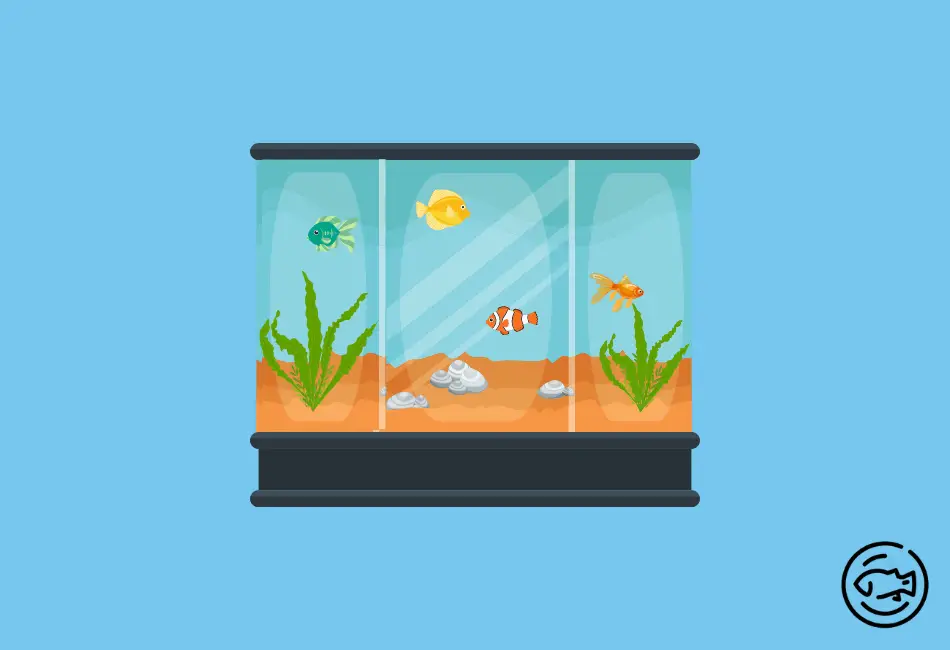The Aponogeton ulvaceus, an exquisite bulbous species originating from Madagascar, came to our attention while seeking to introduce some verdancy to our aquatic habitat.
While exploring, we chanced upon an image of an Aponogeton ulvaceus in its vibrant bloom and were instantly smitten!
Subsequently, we have developed an immense appreciation for these tropical botanicals. Thus, we will cover all you need to comprehend about Aponogetons in this piece.
Origin
While the Aponogeton bulb is a product of Madagascar, it flourishes in Africa, Asia, and Oceania. The most prevalent and cost-effective species is the Aponogeton crispus, indigenous to Sri Lanka in Southeast Asia.
Appearance

Aponogeton foliage boasts a delicate, translucent green hue, curving into an elegantly ridged pattern.
A single plant can generate up to 40 leaves from its sole bloom root, each leaf reaching lengths of up to 50 cm. Additionally, these underwater flora exhibit a relatively extensive reach, extending to approximately 60 cm in breadth.
Tiny white blossoms spring forth from the undulating leaves when permitted to stretch beyond the water’s surface. While all leaf stems share a uniform length, the leaf blade’s base slowly narrows, and the margins ripple. Exposure to high-powered illumination will impart a reddish tint to the leaves.
Cultivation
These plants expand swiftly and broadly, making them straightforward for novice enthusiasts. Once you’ve honed the method, cultivation becomes effortless.
Planting
You can situate your bulbs either in the backdrop or the mid-ground. However, the tank’s rear is the most suitable option.
- Your bulbs can be situated in the backdrop or the central zone of your aquarium, though the tank’s rear part is typically the most suitable choice.
- If you’re positioning more than a single bulb, ensure they are spaced about 2 or 3 inches apart. While these bulbs will be implanted in the substrate, avoid total submersion.
- The planting should be deep enough to secure them in position.
- If the bulb hasn’t initiated budding, submerge the denser end in the substrate.
- Always embed the roots and not the emerging shoot.
Soil and Fertilization
For your substrate selection, opt for a medium that is abundant in nutrients. Aquarium soil would be our suggestion.
Nevertheless, if you’re incorporating it into your aquarium, a substrate would already be in place—position nutrient capsules or tablets adjacent to the root system in such cases.
Pebbles are a superior alternative to sand if you’re reluctant to employ aquarium soil. If you aim to cultivate your Aponogeton in a petite aquarium, utilize liquid carbon to encourage plant growth.
A word of caution: Our recommendation to use aquarium soil should not be misconstrued as an instruction to overhaul your entire substrate. Doing so can jeopardize the biological filtration functions of your setup.
also read: Aquarium Banana Plant
Care
Water Temperature
These plants thrive in tropical regions and require warm water to survive. The optimal temperature range is between 68 to 72°F (22-28°C).
PH Level
The soil’s acidity level typically plays a paramount role in dictating a plant’s nutrient absorption capacity. For Aponogeton, the most conducive pH spectrum lies between 6.5 and 7.5.
Should the pH deviate from this established range, the plant might struggle to assimilate nutrients from the soil, eventually leading to its demise. Hence, it is vital to regularly assess and suitably adjust the pH level within your aquarium.
Employing a pH testing kit could significantly facilitate this task.
Tank Capacity
These floral bulbs can grow considerably, requiring an adequately sized tank. I’d suggest a minimum of a 10-gallon tank.
Filtration System
These species require a superior biological filter to ensure the water is safe for their growth.
For my planted tanks, we always rely on an under-gravel filter.
Substrate
The substrate not only provides a home for the plants but also supplies them with essential nutrients required for proper growth.
Lighting
Novice planters might favor less intense illumination, as increased light exposure often leads to accelerated growth, necessitating regular bulb pruning and feeding.
Still, this doesn’t suggest you can resort to excessively low-powered LEDs, as this could invite other issues, such as fostering the proliferation of algae.
Regarding 10-gallon water habitats, staying within 10w LED spotlights is advisable, allowing for a limited lighting period of around 6 hours.
LED spotlights with color temperatures around 6,700k are excellent replacements for specialized aquarium lighting for those seeking a more budget-friendly alternative.
You can easily combine this with readily available NPK and liquid carbon formulas to cultivate even the most demanding underwater plants!
What Nutrients Do Aponogeton Plants Require?
Aponogeton species require carbon for proper growth, a critical component for photosynthesis, which manufactures sustenance for this graceful plant.
Suppose you aim to nurture these beautiful plants in a compact aquarium (with a capacity of 30 gallons or less). In that case, incorporating a liquid carbon compound is advisable, especially crucial for smaller tanks with a sparse population.
Apart from enhancing plant growth, it also eradicates diverse algae forms. Additionally, liquid carbon is an economical and perfect substitute for CO2 injections.
Compatibility of Aponogeton Plants
These attractive plants are uncomplicated to care for, ensuring they will stay manageable in your aquarium. You can house them with any aquatic species, freeing you from concerns about compatibility issues.
If your aquarium houses a solitary betta within a 5-gallon nano tank, the advisable course is to utilize just one Aponogeton bulb.
Given that a single bulb of this plant species has the potential to sprout up to 40 leaves, each spanning roughly an inch, it’s evident that if you’re considering planting more than one, you should allow a gap of 2 or 3 inches between them.
What Are the Benefits of an Aponogeton Plant?
The Aponogeton plant isn’t just aesthetically pleasing; it brings a host of advantages to your aquarium. Here are some reasons why having this leafy plant in your tank is beneficial:
- These plants instill a sense of lush, verdant ambiance in your aquarium, mimicking the natural habitats of your tropical species and making bettas feel more comfortable. Betta fish show such an affinity for Aponogeton bulb plants that aquarists often refer to the plant as the “Betta Bulb.”
- The foliage of these beautiful bulb plants is so extensive and compact that it offers excellent hideaways for your aquarium’s residents.
- Any leaves shed by the Aponogetons become nourishment for detritus feeders and foragers in the tank.
- These plants facilitate the conversion of carbon dioxide into breathable oxygen, augmenting the available oxygen for your aquarium’s inhabitants.
- As Aponogetons experience rapid growth, they demand more nutrients, lowering the levels of ammonia and nitrate in your tank, thus curtailing the proliferation of algae.
FAQs
Should I Prune Bulbs?
Bulbs often overgrow their boundaries, making smaller tanks feel cramped. Thankfully, you can trim them as desired to prevent rot in your bulb plants.
How Can I Rest My Aponogeton Plant?
If your bulb needs a rest, follow these steps:
- Remove it from the tank
- Remove all its leaves and roots.
- Place it in a bag of damp sand and keep it in a cool, dry, dark place for two months. (It’s best to do this during the rainy seasons)
- Afterward, you can safely replant it.
How Long Does It Take for Aponogeton to Grow?
Aponogeton ulvaceus, under proper care, is a rapidly growing plant, potentially reaching a height of 1 foot in just one month.
Does Aponogeton Require CO2?
They do not need CO2, however, it will benefit from CO2 as it will assist the plant to grow faster and produce more leaves.
How Many Aponogeton Plants Can Be Kept per Gallon?
You should only keep one Aponogeton plant per 10 gallons, as they can grow up to 40 leaves each.
Can Goldfish Eat Aponogeton?
Goldfish tend to nibble on the leaves of this plant. If you’re worried about this, you can always grow your plants in a pot to keep them safe.
Does Aponogeton Need Fertilizer?
Aponogeton does not need fertilizer if you have a well-balanced aquarium. However, you can add a liquid carbon-rich fertilizer to encourage faster growth.
Can You Propagate them?
They can be propagated easily, which makes them great beginner plants, and if you have a flowering Aponogeton crispus, you can use the seeds for propagation.
Conclusion
Aponogeton is a beautiful and low-maintenance plant with numerous benefits for your aquarium. Their thick, lush leaves and stunning flowers make any tank more inviting – your fish will love them, too!
I hope this article has been helpful, and if you have any questions or comments, please feel free to leave them below. Thanks for reading!
Sharing is caring! Don’t forget to share your newfound knowledge about these aquarium plants with other aquarists. Happy planting!



